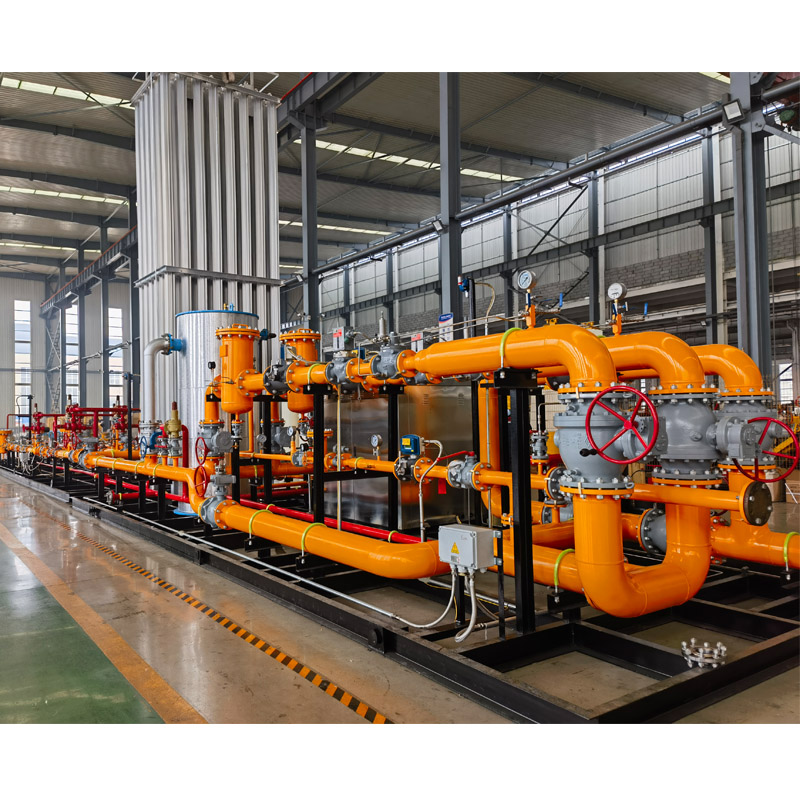
Nov . 12, 2024 09:02
Back to list
صمام تخفيض ضغط الغاز
Understanding Gas Pressure Reduction Valves A Comprehensive Overview
Gas pressure reduction valves, often referred to as pressure regulators, play a vital role in gas distribution systems. They are crucial components that help manage and control the pressure of gas as it travels from high-pressure sources to lower-pressure applications, ensuring safe and efficient gas use across various industries such as residential, commercial, and industrial sectors.
Function of Gas Pressure Reduction Valves
The primary function of a gas pressure reduction valve is to decrease the pressure of the incoming gas to a predefined, stable output pressure. This is essential because many applications require gas to be delivered at specific pressures for optimal performance. For instance, domestic appliances like stoves and heaters typically operate at low pressure, whereas industrial processes may demand higher pressures.
Components of Gas Pressure Reduction Valves
Typically, a gas pressure reduction valve consists of several key components, including a valve body, diaphragm, spring, and adjusting screw. The valve body houses the incoming and outgoing gas flow paths. The diaphragm reacts to changes in pressure, providing a responsive mechanism to adjust the flow. The spring applies a force to the diaphragm, setting the default pressure level. The adjusting screw allows for fine-tuning of the output pressure as needed.
When gas enters the valve at a high pressure, it pushes against the diaphragm. If the output pressure exceeds the preset level, the diaphragm moves to close the valve partially, reducing the gas flow. When the output pressure drops, the diaphragm opens the valve, allowing more gas to flow through. This dynamic process ensures that the output pressure remains relatively constant, regardless of variations in the input pressure.
Types of Gas Pressure Reduction Valves
.
1. Single-stage Regulators These are often used in applications where the input pressure varies significantly, yet a constant output is needed. They are simpler and suited for relatively straightforward applications.
صمام تخفيض ضغط الغاز

2. Two-stage Regulators These are utilized when a more stable output pressure is essential. They first reduce the pressure to an intermediate level in the first stage and then to the final desired output in the second stage, providing improved regulation and performance.
3. Automatic Pressure Control Valves Featuring advanced technology, these valves automatically adjust to changing pressure conditions without the need for manual adjustments. They are increasingly adopted in modern gas distribution systems due to their efficiency and reliability.
Importance of Proper Installation and Maintenance
The efficiency of gas pressure reduction valves hinges not just on their design but also on proper installation and ongoing maintenance. Incorrect installation can lead to safety hazards, inefficiencies, and potential failures. It is essential to follow manufacturer guidelines and local codes during installation.
Regular inspections and maintenance are critical to ensure that the regulators continue to function correctly. This includes checking for leaks, ensuring that moving parts are lubricated, and confirming that pressure settings are accurate. A well-maintained gas pressure reduction valve not only enhances system safety but also ensures that gas appliances operate efficiently, leading to lower energy costs.
Safety Considerations
Given the nature of gas distribution, safety is paramount. Gas pressure reduction valves incorporate various safety features, such as relief valves that prevent excessive pressure buildup within the system. Additionally, installing redundant systems or backup regulators can provide additional safety assurance in critical applications.
Conclusion
Gas pressure reduction valves are integral to the safe and efficient operation of gas systems. Understanding their function, types, and maintenance requirements is essential for anyone involved in gas management. By ensuring these valves operate effectively, users can enhance safety, improve efficiency, and optimize the performance of gas-powered appliances and systems. As technology evolves, future advancements in pressure regulation will likely yield even more reliable and efficient solutions, further enhancing the role of these essential components in gas distribution systems.
Next:
Latest news
-
Safety Valve Spring-Loaded Design Overpressure ProtectionNewsJul.25,2025
-
Precision Voltage Regulator AC5 Accuracy Grade PerformanceNewsJul.25,2025
-
Natural Gas Pressure Regulating Skid Industrial Pipeline ApplicationsNewsJul.25,2025
-
Natural Gas Filter Stainless Steel Mesh Element DesignNewsJul.25,2025
-
Gas Pressure Regulator Valve Direct-Acting Spring-Loaded DesignNewsJul.25,2025
-
Decompression Equipment Multi-Stage Heat Exchange System DesignNewsJul.25,2025

